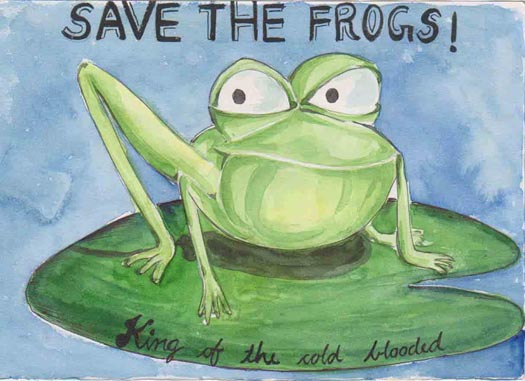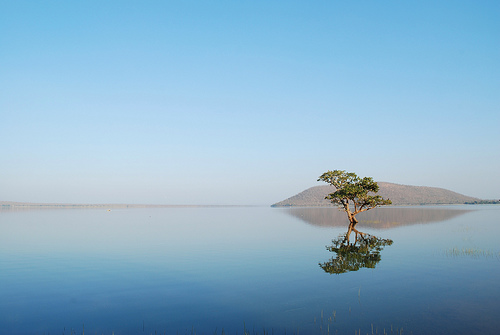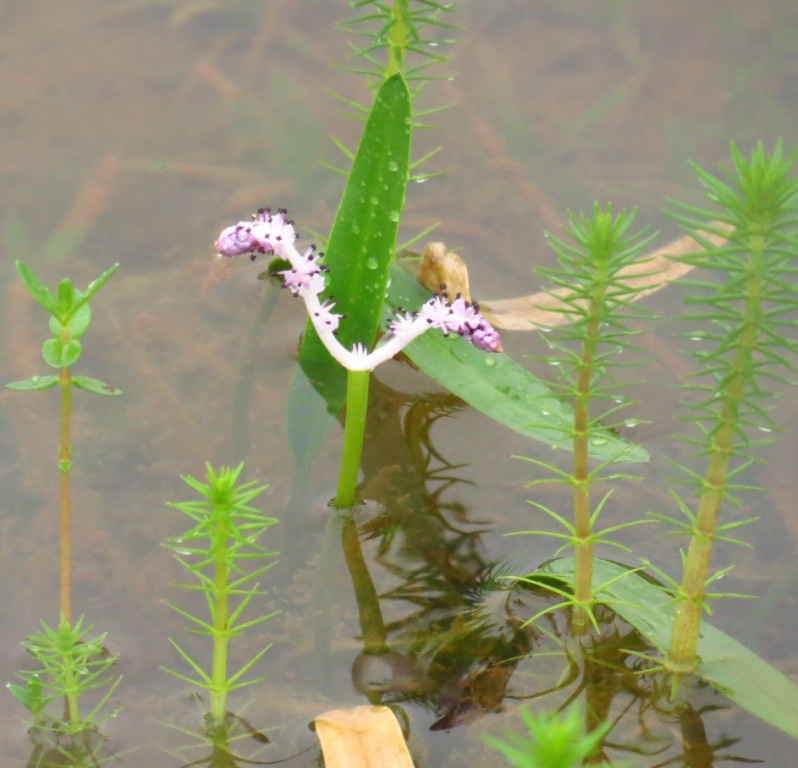 Saving the tigers might be the buzzword in today’s world, but saving other creatures of the forest is as essential. Take the frogs for example. They are not only indicators of the stability of an ecosystem but are also helping scientist study climate change impact. Here are some ways by which you can save these amphibians.
Saving the tigers might be the buzzword in today’s world, but saving other creatures of the forest is as essential. Take the frogs for example. They are not only indicators of the stability of an ecosystem but are also helping scientist study climate change impact. Here are some ways by which you can save these amphibians.
Frogs are an essential part of nature’s biodiversity. They are food for many predators, and as insect eaters themselves help keep a check on the insect population. Some scientists in the Western Ghats are seeking the help of frogs to understand the climate change affects taking place in these forests. Most recent discoveries of new species include frogs and that too discovered mostly in India.
According to Digital Journal,
“According to the IUCN Red List of Threatened species, at least 1,856 amphibian species are threatened with extinction, representing 32 percent of all known species worldwide.Scientists fear that more than 50 amphibian species worldwide have already become extinct over the last 15 years alone, which includes over 18 species from South Asia alone. “
Hence, in order to save these species and biodiversity automatically, here are a few things you can do today and every day,
1. Don’t use Pesticides
Frogs have an extremely delicate skin. It is permeable and has respiratory function. Because of its porous nature the water of the lakes or ponds they reside in is easily absorbed. When you use pesticides or insecticides in the garden or in a farm, the toxic chemical mixed with the water reaches waterways and ultimately the rivers, ponds and lakes where the frogs are living. Use organic manures as the natural ingredients don’t harm the frogs.
2. Drive Slowly
Monsoons is the time when frogs appear in hundreds. It is also the season where they easily get killed by speeding cars. Keep your eyes on the road and apply brakes when you see a frog hopping across the road. It is a small gesture, but something you can do to save them. Who knows the frog that is crossing the road is one of the rarest species that is already moving towards extinction.
3. Say no to frog legs
It is a western treat but like other European countries, Indians too are experimenting with frog leg delicacies prepared in high end restaurants. There are also some states where eating frogs is a part of the culture. But you must surely understand that frogs served as food are often captured from forests and it is in these forests that they should continue to thrive…not as parts on your food platter.
The Government of India in 1985 declared a blanket ban, on the catching and the killing of frogs under the Wildlife (Protection) Act 1972. This implies that any individual or restaurant detected to be catching, killing, selling, serving or even eating frog meat violates the provisions of the Act. This would attract stringent punishment with a fine of Rs 25,000 and/or imprisonment upto 3 years.
4. Say no to Pet trade
The pet markets of many Asian countries like Singapore and Vietnam sell a variety of illegal pets including frogs. If you are are buying one to keep as a pet, for experimenting or for dissections, remember it is illegal and can land you in jail.
5. Beware of non-friendly fishes
If you live near a water body, chances are it is home to a number of frogs and fishes. Fishes are not frog’s greatest friends as they eat frog eggs, but native frogs and fishes live in harmony with each other maintaining each other’s population balance. Trouble comes when a non-native fish begins living here. The frogs are not used to this new fish species and do not know how to defend their eggs from these foreign intruders. What you can do is ensure that the ponds or lakes are not home to fishes that are not originally from that area. Get expert help if you can’t do it alone.
6. Dispose Batteries safely
Once again the toxic chemicals present in batteries can easily leach out, mix with water and poison it for the frogs. Don’t carelessly throw away used batteries, especially not into a water body. Better still use rechargeable batteries that can be used much longer than one time use batteries.
7. Save water
Water is finally a frog’s home. When you save even a drop of water at home, it is helping some frog somewhere build a new home.
More Related Stories,
Scientists Find 12 New Frog Species
10 New Frog Species Discovered in Western Ghats
Increased Frog Leg Demand Pushing Frogs to Extinction
Image via savethefrog










One thought on “How You can Save Frogs”